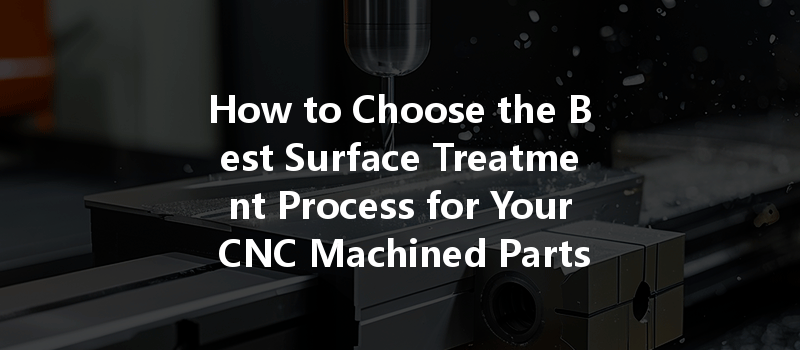Opening: Hooking the Reader
Did you know that over 70% of manufacturing defects occur due to insufficient surface treatment? In the competitive world of CNC machining, producing high-quality parts is not just about accurate cuts and shapes; it’s also about how well the surface treatments enhance the durability, functionality, and aesthetic appeal of those parts. So, how do you select the best surface treatment for your CNC machined components?
Choosing the right surface treatment process can make a significant difference in the performance of your parts, prolonging their service life and reducing the need for maintenance. In this blog, we will explore the various surface treatment techniques, delving deep into the advantages and considerations of each method. By the end, you will have a comprehensive understanding of how to make informed decisions regarding surface treatments for your CNC machined parts.
Understanding the Importance of Surface Treatment
Surface treatment is not merely an aesthetic endeavor; it plays a critical role in defining the longevity, reliability, and overall performance of a part. The surface of a machined component is often the first point of contact with the environment, meaning it is susceptible to wear, corrosion, and fatigue. Here are some key reasons why surface treatment is essential:
Key Factors in Choosing a Surface Treatment Process
When selecting a surface treatment for CNC machined parts, consider these essential factors:
Commonly Used Surface Treatment Processes
Overview: Anodizing is an electrochemical process that converts the metal surface into a decorative and protective oxide layer.
Advantages:
Considerations: Anodizing is mainly applicable to aluminum. It can increase the dimension of the part due to the oxide layer, which may require adjustments in the machining process.
Overview: Galvanization involves coating steel or iron with a layer of zinc to prevent rust.
Advantages:
Considerations: The surface finish may not be to everyone’s taste, as it gives a rough finish.
Overview: This method applies a dry powder that is electrostatically charged, then cured under heat to create a hard finish.
Advantages:

Considerations: Powder coating may require a pre-treatment for best adhesion and finish quality.
Overview: Metal plating entails applying a layer of metal (like nickel or chrome) to the surface of a part to enhance properties.
Advantages:
Considerations: Plating can be costly and requires precise control to avoid issues like peeling or uneven coverage.
Overview: In this process, a chemical treatment alters the surface layer of the metal to provide corrosion resistance.
Advantages:
Considerations: This method can result in less robust protection compared to anodizing or galvanization.
Overview: Electropolishing is an electrochemical process that removes a thin layer of material from the metal surface to improve finish.
Advantages:
Considerations: It is less effective on rough surfaces and requires careful control to avoid excessive material removal.
Overview: This technique uses lasers to modify the surface properties of materials.
Advantages:
Considerations: Implementation costs may be higher; best for specialized applications.
Factors for Implementation
: The Takeaway
Choosing the right surface treatment for CNC machined parts is a crucial step in the manufacturing process. By understanding the various techniques available and their applications, material properties, and functional requirements, manufacturers can achieve optimum results.
In summary, consider the factors of material type, intended application, desired properties, cost, and compliance when selecting a process. The right surface treatment can enhance the durability and performance of your CNC machined parts, ultimately leading to reduced manufacturing costs and increased customer satisfaction.
As industries continue to evolve, understanding the intricacies of surface treatments becomes paramount. This blog serves as a reminder that although it may seem like a small consideration, surface treatment plays a vital role in the overall success of CNC manufacturing. So, the next time you are faced with a surface treatment decision, weigh your options carefully. Your task is not just to produce parts but to produce parts that stand the test of time.



